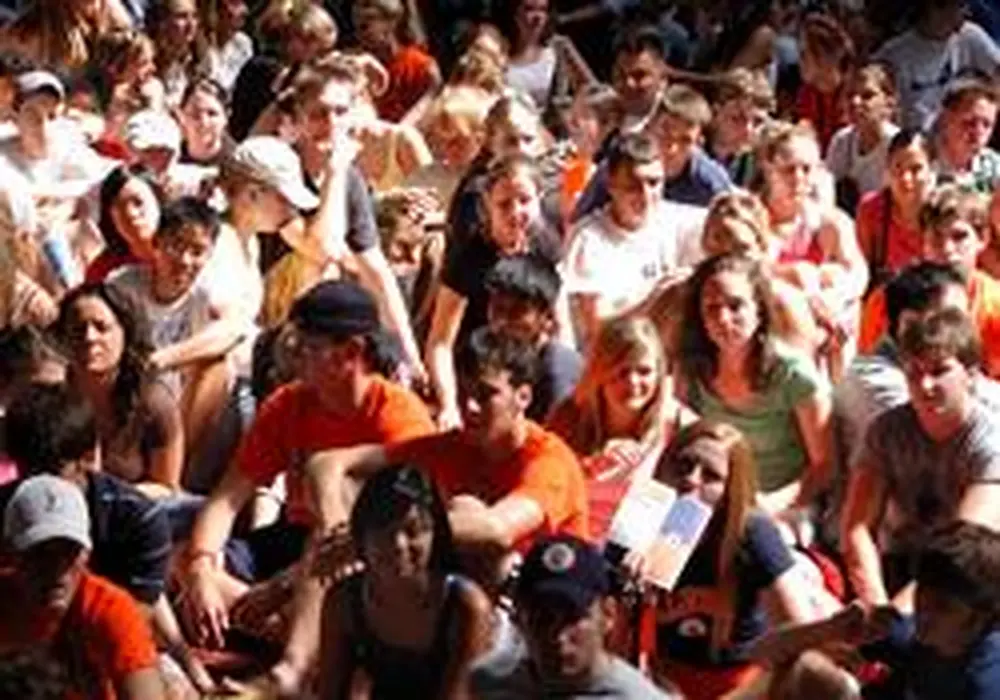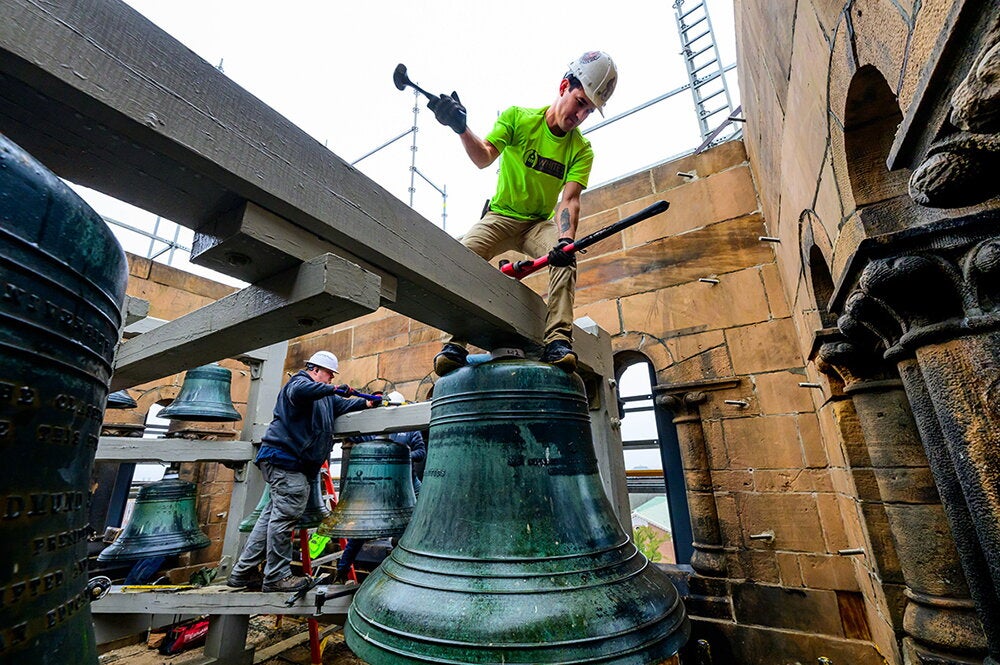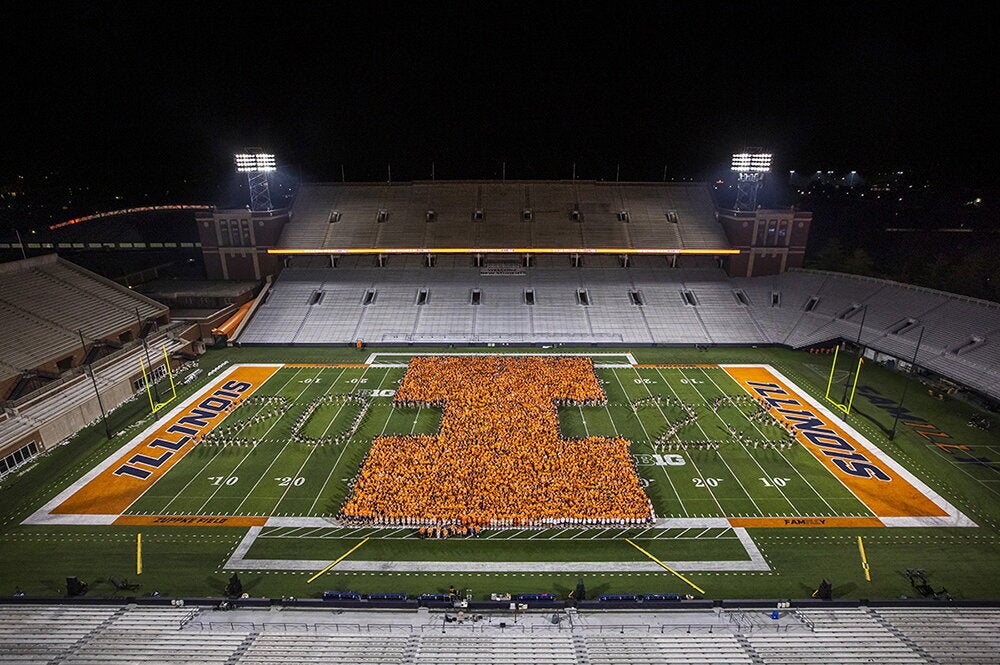

Many colleges would envy the dilemma faced by U of I admissions offices. Rather than worrying about filling empty chairs, the University has been trying to find some.
With more students than ever seeking—and accepting—admission to U of I, the University has faced record enrollments in each of the past eight years prior to 2007. The abundance of talent flocking to U of I, however, has not come without costs. Some incoming classes have grown so large that the campus has begun taking steps to reverse this trend as part of an overall strategic plan to better control enrollment.
"Any time you talk about reducing enrollment, particularly when demand is strong, it is touchy," says Mary Macmanus Ramsbottom, associate dean and unit head for LAS student academic affairs, which has been hit particularly hard since LAS enrolls the bulk of freshmen. "On the one hand you want to admit every qualified student, but there is a point at which you are straining resources in ways that may begin to compromise the quality of the education."
This desire to protect high quality education is why LAS is quietly celebrating its progress in achieving more manageable sizes for incoming freshman classes. For the first time since 2002, enrollment in the college is down. The difference between this year and last is only 42 students—the total undergraduate population dipped to 15,080 in 2007 from 15,122 in 2006—but it's the kind of gradual reduction that is good for students and the college.
The reduction is mirrored on the campus level, where 2007 marked the first year since 1999 that the University has not set a new overall enrollment record, and the first year since 1998 that undergraduate enrollment has not set a record.
The size of the incoming class at LAS has decreased for the third year in a row. In 2007 the college welcomed 3,800 freshmen versus 3,878 in 2006. Both years represented a significant reduction from the 4,200 students who enrolled in LAS in 2005, a figure that took the college and campus by surprise.
"It was an abundance of riches that we only partially anticipated," says Macmanus Ramsbottom, referring to a decision earlier in the decade to increase enrollment, largely out of a desire to serve the greater number of students coming out of Illinois high schools.
As a result of the decision, new freshman admissions at LAS jumped to 3,250 in fall 2002, up from 2,914 in 2001, and it increased from there. Administrators always knew that a tipping point could be reached where resources might be stretched too thin by the student population. Many felt that point was reached in 2005.
"There's a sense that we got ahead of ourselves," says Macmanus Ramsbottom. "The desire to accommodate the burgeoning high school population was a good instinct, but then when we got unexpectedly higher yields (the ratio of students who accepted enrollment offers) on top of that, all of a sudden we were dealing with, in LAS's case, some 200 more freshmen than expected. That's 200 times five courses per semester."
Historically, the admissions yield for LAS is no more than 50 percent, meaning 50 percent of students who are admitted by LAS chose to enroll. In 2005, however, the admissions yield was 57.4 percent.
Mercedes Ramirez-Fernandez, assistant dean of admissions and director of new student advising for LAS, says there are lots of theories as to why 2005 was such a banner year for enrollment. "In 2005, the basketball team was doing fantastic. Silly as that sounds, other colleges on campus also experienced a large jump in yield."

For the first time that year, she adds, essays were included on the application, implying that the students who applied were more serious about coming to U of I. Whatever the reason, she says, it had an effect on class size.
"Classes that normally are smaller in the upper level, the (academic) major classes, had to be expanded," Ramirez-Fernandez says.
In 2005, LAS made accommodations for the increase in enrollment. The college hired extra academic advisors to work with students during the summer registration period and also added sections for high-demand courses. Macmanus Ramsbottom does not anticipate reversing these measures any time soon since the reductions in enrollment are incremental and will not be large enough to warrant such changes.
Nor does she expect the reductions to affect access to the college. The downward trend is modest and is expected to be spread out across the next three years, mirroring the expected decline in the size of the population of Illinois high school graduates.
Coincidentally, while the campus believes it has over-enrolled freshmen, it has under-enrolled transfer students. The campus strategic plan calls for a bump in transfer student admissions to place U of I more on par with its peer institutions, many of whom accept higher numbers of transfer students as part of their mission of serving state students. The increase will be modest—perhaps from about 1,200 to 1,800 per year campuswide, out of a total undergraduate population of slightly fewer than 31,000. In LAS, transfer student numbers may increase by about 250 per year.
In the midst of both changes, Macmanus Ramsbottom senses a difference in how admissions and enrollment levels have come to be managed. Admissions targets are set by the Office of the Provost in consultation with the Office of Admissions and Records and the colleges. Even though the system can come with delays—it takes longer to set target enrollments—she likes the new integrated approach. It involves consideration of more than prospective freshman figures.
"It seems to be more systematic in terms of looking at the campus as a whole," she says. "In the past every college did its own thing, had a quick conversation with Office of Admissions and Records, and went from there. Now it's being much more carefully tracked and considered."
Enrollment management is, in fact, a complicated business, she says, and both college and campus decisions are now more intentional and their consequences more fully understood.


